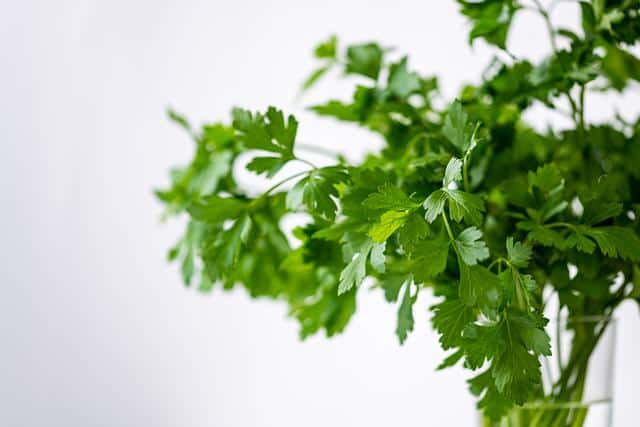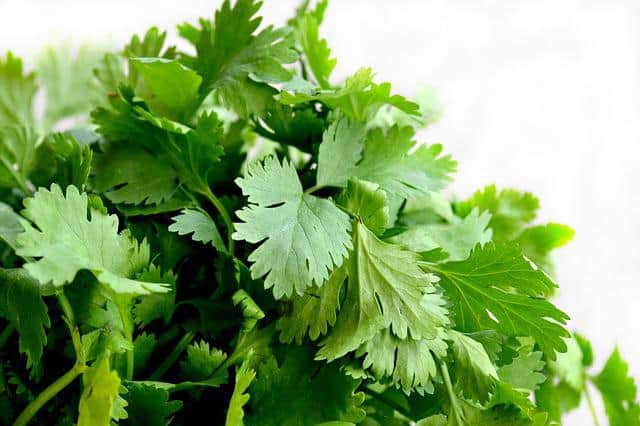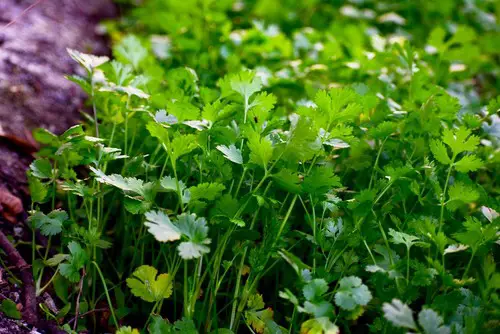Cilantro is an aromatic and strong flavored herb used in various cuisines around the world, from South Asian, to Middle Eastern, and East Asian.
Being an easy to grow herb, cilantro doesn’t require a lot of active care on the gardener’s part. The question remains; How to pick cilantro without killing plant? This here is the tricky part to growing cilantro, learning how to not kill it while picking out some.
While cilantro is a fast growing herb and ripens 2 months after seeding, it’s also easy to kill if not handled with proper care while cutting.
To avoid killing the cilantro plant while picking, it’s best to harvest only a few leaves from each stem at a time and to avoid picking from the same stem repeatedly, as this can stunt its growth and lead to premature bolting.
This article gives you more tips on how to not kill your plant along with other related information. We believe our readers to be far from plant-killers, and we hope you won’t alter that belief by staying with us till the end of the article.
How to Pick Cilantro Without Killing Plant?

While harvesting cilantro, you should cut the stems of the leaves a bit above the surface of soil using a scissor. This leaves some room of around 1 inch on the stem connected to the leaf that you just cut, making sure that the leaves can re-grow on the stem.
Harvest only the outer leaves if you need them urgently for cooking, but make sure to leave room on the stem for new leaves.
The largest leaves on the cilantro plant should be cut first since they’re fully grown and at a risk of losing their flavor. For cutting the leaves off, you can use scissors, but if you’re in a hurry, pinch them off the stems.
Never take too much off the plant stem while harvesting, as it hinders the plant’s ability to regrow fresh leaves.
One important thing to make sure of is the timing of harvesting your cilantro plant; it should not be too early. You should give your plant a 4 weeks’ room to mature and grow in size, so that you can take away the leaves and use them.
The rest of this article elaborates on the variety of solutions to the cilantro-killing problem, and suggests various tips and tricks to use at your convenience.
1. Biological facts about cilantro – when is it ready for harvest?
Cilantro is the leaf on a coriander plant, and the seeds of this plant are called coriander seeds. A cilantro plant prefers colder climates to grow in, but despite that, this is a plant that does not need high maintenance, it can thrive and adapt to environments.
Cilantro ripens 40-70 days after seeding, an approximate of 2 months. After ripening, another important thing is to know when to pick cilantro so as to not kill the plant.
The plant should be harvested after it has reached a height of 16-20 cm, and the harvest should be done on a weekly basis to avoid the plants flowering and producing seeds.
This would not be a desired outcome for a gardener since they’re concerned about growing cilantro leaves on the plant, not flowers which they have no use for other than to get plant seeds.
2. Ways of harvesting cilantro without plant damage

Only harvest according to the amount you need, so harvest in moderation. Always pick the outer leaves first since they taste fresher, as compared to older, yellowing leaves. For the yellowing/decaying leaves, pick them out using sterile equipment to protect other leaves from decay.
Harvesting will not kill your plant, granted you do it with a proper technique. As for the tools, you can either use your hands, a scissor, or any other sharp cutting tool.
Using your hands to pick cilantro is better for harvesting in smaller amounts, and proper tools are better for larger harvests. If you’re using your hands, don’t tug on the plant as it can cause root damage and weakening of stems, slowing the growth of new leaves. Pick the leaves situated at the nodes to lessen the damage.
3. Tips and tricks to make harvesting easier
Harvest cilantro in colder seasons to perpetuate new leaf growth, and if the plant is flowering, let it produce the seeds and use that to farm more cilantro or in cooking. Always let the plant grow fully before harvesting to get fresher and better tasting leaves, cutting younger stems leads to plant stress.
To pick cilantro without killing plant, never take away more than 30% of the plant, it puts an unnecessary burden on the plant to produce more leaves. While harvesting by hand is easier, use a pair of scissors for a cleaner cut to the stems and lesser damage to its growth capabilities.
4. Storing cilantro after harvesting

After harvesting, store the leftovers either in the refrigerator or in a glass jar filled with water, better if its refrigerated too. Change the water from time to time to keep the herb fresh for future use.
To store in the refrigerator as is, wrap the herb up in a sealed container/bag and keep it in the vegetable section of the fridge; this will keep it fresher for longer.
Also see: How to Harvest Chives Without Killing the Plant
Summary
Picking cilantro without damaging the plant is not very difficult, all it requires is a little bit of expertise, skill, and a lot of careful consideration. The gardener should always keep in mind the age and health of the cilantro before choosing a time to harvest it, and in the amounts appropriate.
By now we hope you’ve found out all there is to know about picking or harvesting cilantro straight off the plant while keeping your plant’s life intact.
Frequently Asked Questions
Can I keep my cilantro plant from producing a lot of seeds?
Unfortunately, you cannot keep your plant from producing seeds but you can reduce their frequency. Harvest it frequently so that it keeps on producing new leaves, giving it no time to produce any flowers and seeds. Keep the soil moist enough for the plant’s nourishment but not waterlog it.
Why is it bad to cut cilantro plants from the middle?
The center of the cilantro plant is where new leaves originate from, and thus it’s not wise to attack the center. The newer branches that split off also originate from the plant center, producing new leaves for the gardener to harvest in the future.
How do you know you’re over-harvesting your cilantro?
If you’re picking out more than 33% or 1/3 of the plant, this means that you’re over-harvesting your plant and should stop before you kill it.
What to do with cilantro branches that don’t produce any new leaves?
That’s rarely the case, but if a branch is not producing any more leaves then it’s probably time to either try to graft it to salvage, or cut it off entirely.

Hey, I’m Lisa and I’ve been an avid gardener for over 30 years. I love writing, talking and living in the garden! Feel free to connect with me on my socials below

